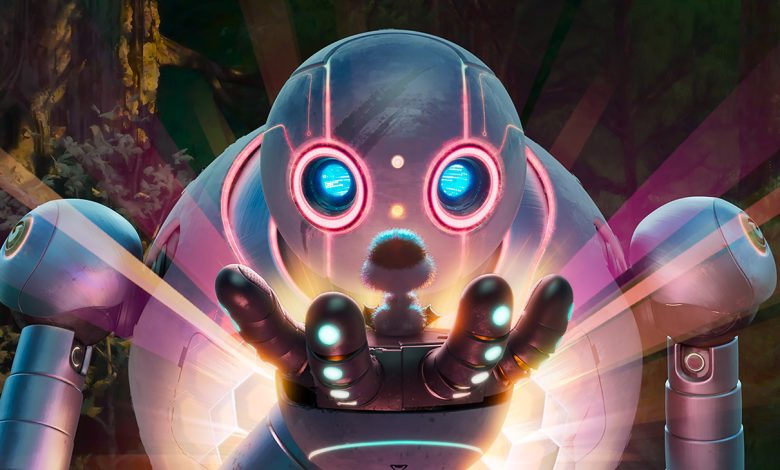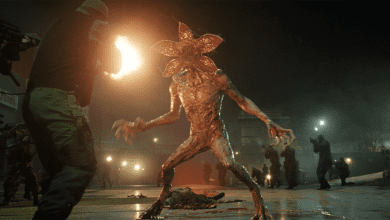How ‘Wild Robot’ Expands on — and Deepens — Peter Brown’s Book

Over the past few years, the prospect of “AI companions” has been presented as either a dystopic nightmare, supplanting human friends with programmable circuitry, or a beautiful fantasy, skillfully satisfying our every emotional need.
In his new animated film The Wild Robot, writer-director Chris Sanders asks if each side is a little right.
After all, machines in his DreamWorks Animation sci-fi film can be heartless automatons, ripping away loved ones from those dearest to them. But they can also be tender beings who protect and nurture creatures everyone else has ignored.
“I think that any sort of groundbreaking technology throws things out of balance for a while,” Sanders tells THR. “But in the end, technologies and people tend to work things out.”
On Sunday at TIFF, Sanders will exhibit his finely crafted message to an audience for the first time. His movie is itself a bit of a hybrid, pitched between the best of the DreamWorks talking-animal movies and a vintage minimalist Pixar short. (Sanders says Wild Robot has about half as much dialogue as a typical modern animated feature — a choice he consciously made and the studio, to his delight, went along with.)
Based on Peter Brown’s bestselling middle-grade novel, Wild Robot centers on Roz (voiced by Lupita Nyong’o), a robot marooned on a jungle-y island, as she meets an assortment of colorful anthropomorphic animals. They include a wry mama opossum (Catherine O’Hara), a mischievous fox (Pedro Pascal) and a small orphaned goose (Kit Connor).
Roz needs a task to feel like herself. Enter the raising of the goose, an inspirational arc that nonetheless takes some surprising turns in the third act. Avatar comparisons — “foreign being lands in a distant colorful place, eventually is embraced by the natives as a hero” — are inevitable, in part thanks to a breathtaking flight-training scene at the movie’s center, soundtracked by a Maren Morris banger.
“I think all of us wish something like this might happen to us at some point — we find ourselves in a difficult situation and then we grow and change and adapt in order to survive it,” says Sanders, best known for co-writing and co-directing the acclaimed How to Train Your Dragon nearly 15 years ago.
Robot will present its case both for commercial success (Universal opens the film at the end of September) and major awards honors, having already landed on some pundits’ best picture shortlists.
But Sanders says more than any of that, his goal is to spread a type of gentle humanity. “Roz represents this unrelenting force of kindness and fairness, and she begins to change the world around her because of that,” he says. “Kindness can be a survival skill — that’s really a big part of this story.”
Specifically, the kindness of nurturing: Roz is, in a sense, all of our mothers (and, in the case of this writer, the name of his actual mother). “A lot of animated films are devoid of moms,” Sanders said. “This is an unusual project in that a mother’s journey is at its core.”
Or, as Nyong’o says in a newly released featurette, “This movie is not afraid to pull at your heartstrings.”
That humanist ethos was also at the heart of the film’s production. Wild Robot largely eschews standard-issue CG, instead using tech tools to create a washed-watercolor look that Sanders describes as a “moving painting.”
In fact, for all the ways a robot serves as the story’s hero, Sanders notes that technology took a lesser role here than it does on many animated productions.
“The interesting thing about the making of the film is that it stands in defiance of AI,” he said. “You take one human being off this film and it looks totally different.”
Source: Hollywoodreporter
Related Posts
- Roundball Rocked: With NBA Return Looming, NBC Purges Scripted Roster
- SoundCloud Says It “Has Never Used Artist Content to Train AI Models” After Backlash on Terms of Service Change
- Fox News’ Camryn Kinsey Is “Doing Well” After Fainting on Live TV
- Kerry Washington and Jahleel Kamera in 'Shadow Force.'
Courtesy of Lionsgate
…
- This Alternative Artist Landed a Top-20 Chart Debut With an Album Made Almost Entirely on His Phone





